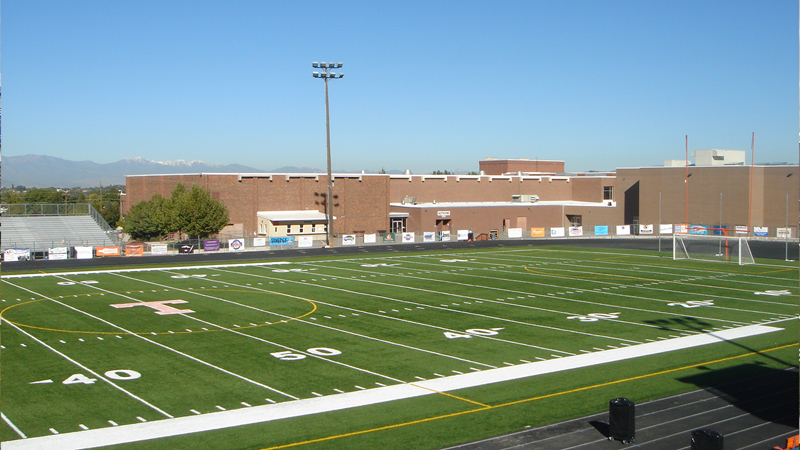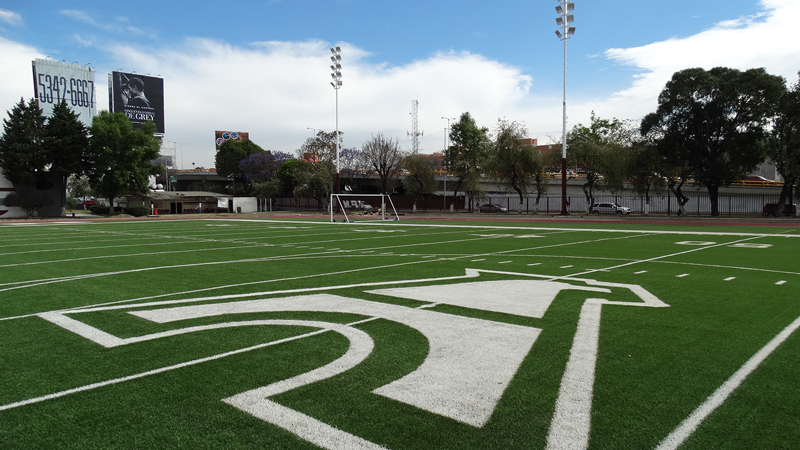How Many Super Bowls Have Been Played on Artificial Turf as of 2025?
- 03/31/2025
The Super Bowl, the pinnacle of American football, is as much about spectacle as it is about sport. While players, halftime shows, and commercials dominate headlines, the playing surface itself has sparked decades of debate.
How many Super Bowls have been played on artificial turf? What drives the NFL’s choice between natural grass and synthetic fields?
This article explores the stadiums that have hosted Super Bowls on artificial turf, the reasons behind their selection, and the controversies that have reshaped the league’s approach.
From the rise of “AstroTurf” in the 1970s to the hybrid systems of today, we break down the science, economics, and player safety concerns tied to these iconic games.

In this article:
What is the Super Bowl?
The Super Bowl is the annual league championship game of the National Football League (NFL) of the United States. It is among the world’s most-watched single sporting events and frequently commands the largest audience among all American broadcasts during the year.
It is second only to the UEFA Champions League final as the most watched annual club sporting event worldwide, and the seven most-watched broadcasts in American television history are Super Bowls.
A Brief History: Artificial Turf’s Rise in the Super Bowl
Since the first Super Bowl in 1967, the NFL has experimented with both natural grass and artificial turf. Early games were played on grass, but the 1970s saw a surge in synthetic fields due to their durability and low maintenance.
Of the 59 Super Bowls played through 2025, 22 have been staged on artificial turf—a statistic that reveals the NFL’s evolving relationship with synthetic surfaces.
Key Statistics:
- Total Super Bowls Played (as of 2025): 59
- Super Bowls Played on Artificial Turf: 22 (37%)
- Super Bowls Played on Natural Grass: 37 (63%)
The first Super Bowl played on artificial turf was Super Bowl VIII in 1974 at Rice Stadium (Houston, Texas), which featured Poly-Turf, a predecessor to modern synthetic surfaces.
This marked a turning point, with turf dominating the next two decades. By the 1990s, iconic domed stadiums like the Superdome (New Orleans) and the Georgia Dome (Atlanta) relied heavily on artificial turf for climate control and multi-use functionality.
However, the tide began to shift in the 2000s. Concerns over player safety and performance sparked a gradual return to natural grass, especially in open-air stadiums.

Case Studies: Super Bowl Turf Controversies
Super Bowl LVII (2023): A Turning Point?
The 2023 game sparked outrage when players likened the turf to “playing on a water park.” The NFL attributed the issues to overwatering, but the incident reignited calls for league-wide grass mandates.
Super Bowl XL (2006): The “Ford Field Fiasco”
Detroit’s Ford Field used FieldTurf, a surface criticized for its deadened ball response. Steelers wide receiver Antwaan Randle El infamously blamed the turf for a missed touchdown pass.
Super Bowl XLVIII (2014): The Cold Weather Compromise
New Jersey’s MetLife Stadium opted for turf to endure freezing temperatures, but the decision drew criticism after several players suffered injuries.
Why Artificial Turf? The NFL’s Practical Compromises
The NFL’s preference for artificial turf in certain Super Bowls stems from three factors:
Climate Control and Dome Stadiums
Domed venues like the Superdome and Detroit’s Ford Field (Super Bowl XL) rely on turf because natural grass cannot grow indoors without sunlight. Turf ensures a consistent surface regardless of weather—a key factor for winter games.
Multi-Use Functionality
Stadiums hosting concerts, conventions, or other sports (e.g., soccer) opt for turf to withstand heavy foot traffic. New Jersey’s MetLife Stadium (Super Bowl XLVIII), home to both the Giants and Jets, uses UBU Speed Series-S5-M turf to endure year-round events.
Cost Efficiency
Maintaining natural grass in harsh climates or indoor settings is prohibitively expensive. Turf eliminates irrigation, mowing, and reseeding costs—a major selling point for budget-conscious franchises.

Turf Technology: From Astro Turf to Hybrid Systems
Modern artificial turf has evolved to address safety concerns. Here’s how Super Bowl surfaces have improved:
Third-Generation Turf (2000s–Present)
- Materials: Polyethylene fibers with rubber/sand infill
- Examples: FieldTurf (Super Bowl XL), Hellas Matrix (Super Bowl LVII)
- Benefits: Softer than astro turf, with better shock absorption.
Hybrid Systems
- Desso GrassMaster: Combines natural grass with synthetic fibers for stability. Used in Super Bowls LI (2017) and LIII (2019).
- Hellas Matrix: Features organic infill (cork and coconut husks) to reduce heat retention.
Retractable Fields
State-of-the-art stadiums like Las Vegas’ Allegiant Stadium (Super Bowl LVIII – 2024) use tray systems to grow natural grass outdoors and wheel it indoors—a costly but player-friendly solution.
Will Super Bowl Turf Survive in the Future?
Of the 22 Super Bowls played on artificial turf, each surface tells a story—of innovation, compromise, and occasional failure. Non-contact knee injuries are higher on turf, per a 2021 study in the American Journal of Sports Medicine.
However, artificial turf isn’t disappearing yet. As hybrid technologies advance, the league may yet find a surface that satisfies players, owners, and fans alike.
For now, the debate rages on. But one fact remains: the ground beneath the Super Bowl’s brightest moments is as contested as the games themselves.



